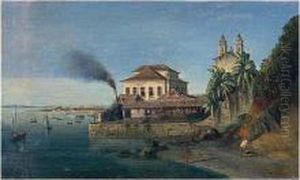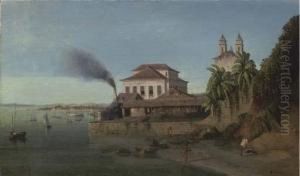Francois Rene Moreaux Paintings
François René Moreaux was a 19th-century French painter who is not widely known in the contemporary art historical canon. Born in 1807, Moreaux's life and career were relatively short as he passed away in 1856. Despite the lack of extensive recognition, Moreaux contributed to the art world during a period of significant transition and development in European art, particularly within France.
Moreaux's artistic endeavors occurred during a time when the Romantic movement was giving way to Realism, and the art scene was bustling with the likes of Delacroix, Courbet, and the early Impressionists. Unfortunately, there is limited documentation on Moreaux's training and early work, but it is known that he was active during a rich cultural period. His works may have been influenced by the dominant artistic trends of his time, such as the focus on naturalism, emotion, and the human experience.
During his career, Moreaux would have had to navigate the changing tastes of the public and the shifting priorities of the art market. He might have exhibited his work at the Paris Salon, the official art exhibition of the Académie des Beaux-Arts, which was the cornerstone of a successful artistic career in France during that era. However, his presence in historical records is scarce, and thus his contributions to art are not as well-documented or celebrated as those of his contemporaries.
Moreaux's death in 1856 marked the end of a brief career that, while it may not have achieved widespread fame, still represents a part of the rich tapestry of French art history. The lack of available information about Moreaux's life and work makes it challenging for art historians to fully assess his impact and place within the art movements of his time. Nonetheless, each artist of the period, including those like Moreaux who have not been remembered by history, played a role in shaping the evolution of artistic expression and contributing to the cultural heritage of France.

